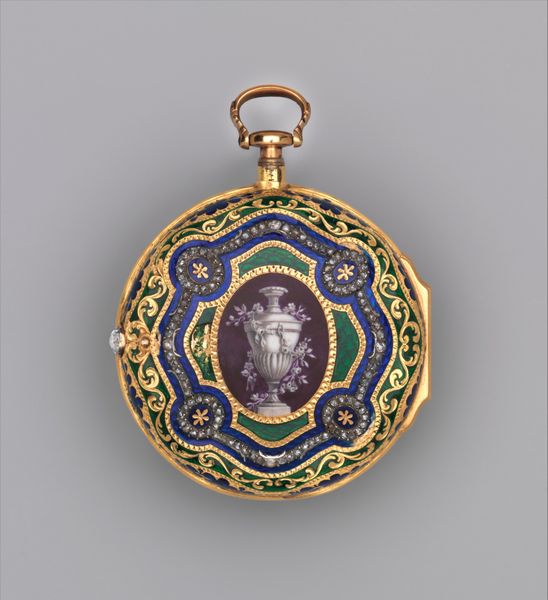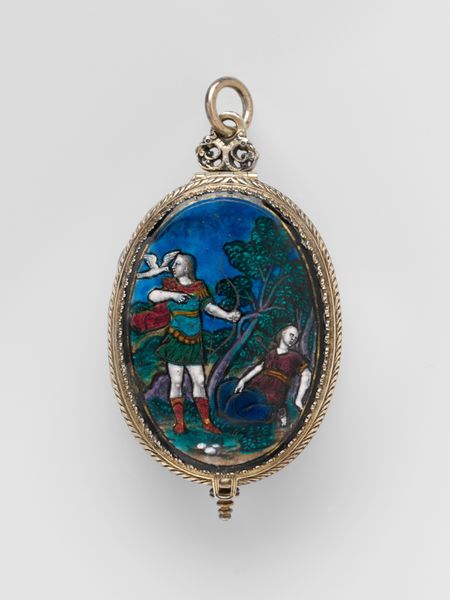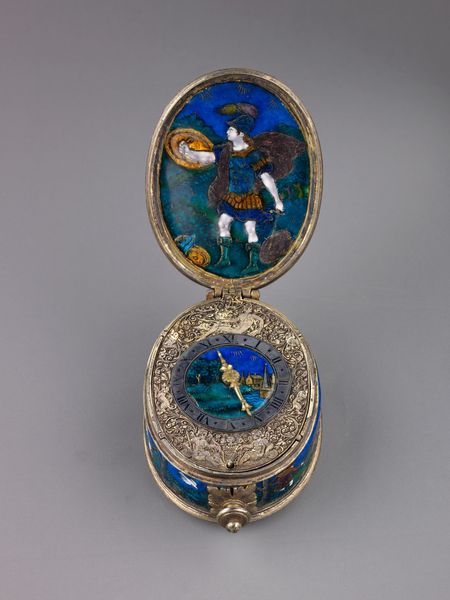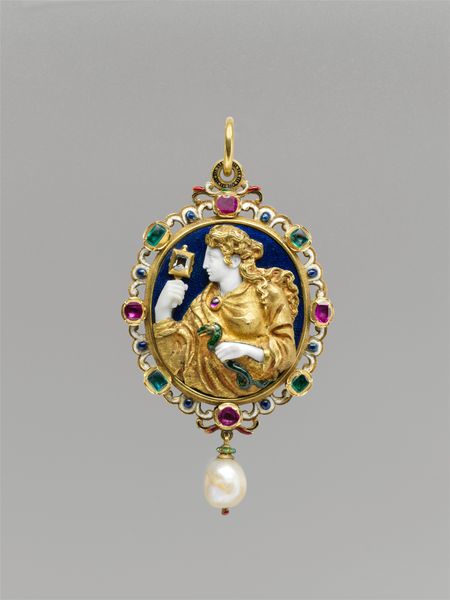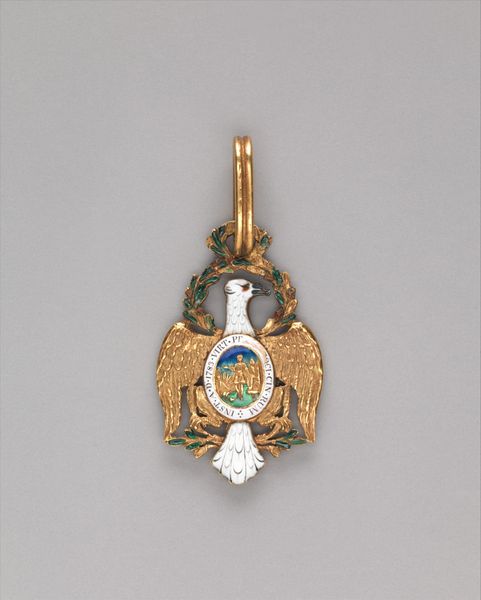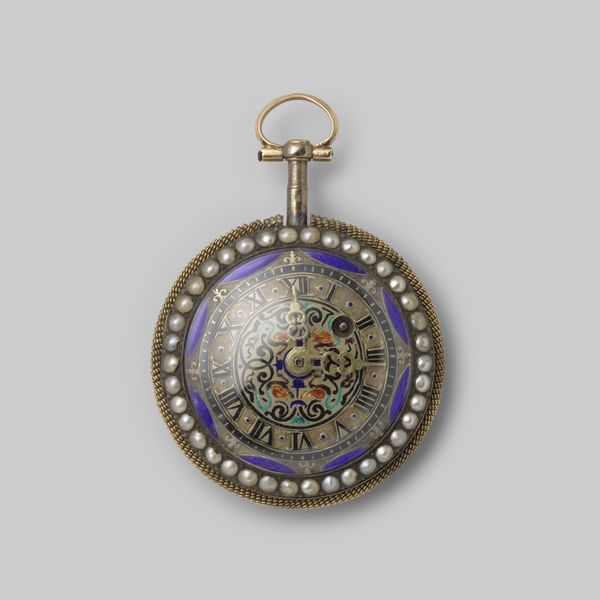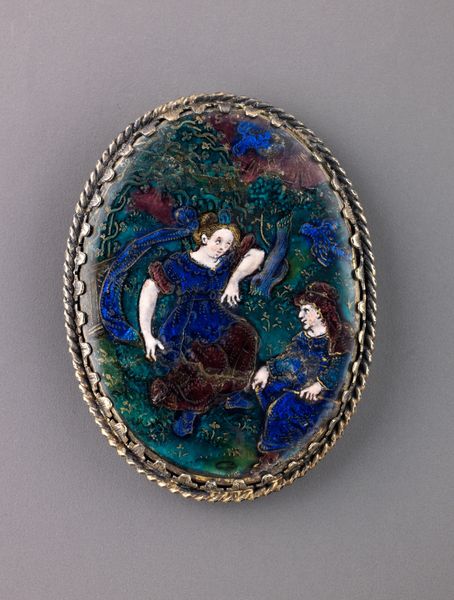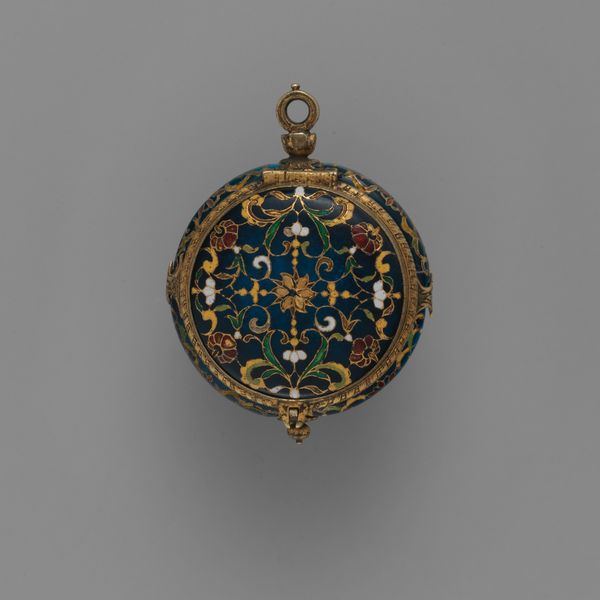
metal, enamel
#
portrait
#
allegory
#
metal
#
mannerism
#
enamel
#
history-painting
#
miniature
Dimensions: H. 11.5 cm, w. 8.1 cm, d. .9 cm.
Copyright: Public Domain
Editor: So, here we have Suzanne de Court’s “Mirror: Venus Mourning the Dead Adonis,” dating roughly from 1600 to 1635. It’s crafted with metal and enamel and has such a delicate, miniature quality. It's heartbreaking and stunning, all at once. What strikes you most when you look at it? Curator: I am immediately drawn to the intricate use of enamel and metal, and the processes by which these materials were combined. The application of heat to fuse the enamel to the metal, the layering of colours, it speaks to the skill and labour involved. The piece prompts questions about where the materials originated, the conditions in which the artisan worked, and how these processes may have been valued within society at the time. This challenges the notion of simply considering the "high art" subject of Venus and Adonis. Editor: That’s a totally different angle than I expected! I was thinking about the story, but you’re focused on the creation. The craftsmanship really is something else, though. Do you think the size of the piece – its use as a mirror - affected its social context? Curator: Absolutely! The use of precious metals and meticulous enamelling likely indicates that this was a luxury object, owned and likely commissioned by someone of considerable means. Its purpose as a mirror brings up questions of self-perception and identity amongst the wealthy during that period, alongside the value and commodity status this piece of artisanry held within a social structure where it acted as both a tool for self-reflection and display of status. Editor: So, the materials and how they were used say just as much, if not more, than the image itself. It’s like the object itself tells a whole social story. I never thought of it that way before. Curator: Exactly. By shifting our focus from the depicted allegory to the materials, the labour, and the socio-economic context of its creation, we gain a more comprehensive understanding of this artwork’s significance beyond just its surface beauty. Editor: Wow, I will never look at art the same way. Thank you for showing me that! Curator: My pleasure. It's important to remember that artworks are products of complex social, material, and historical forces. Exploring those forces deepens our appreciation.
Comments
No comments
Be the first to comment and join the conversation on the ultimate creative platform.


